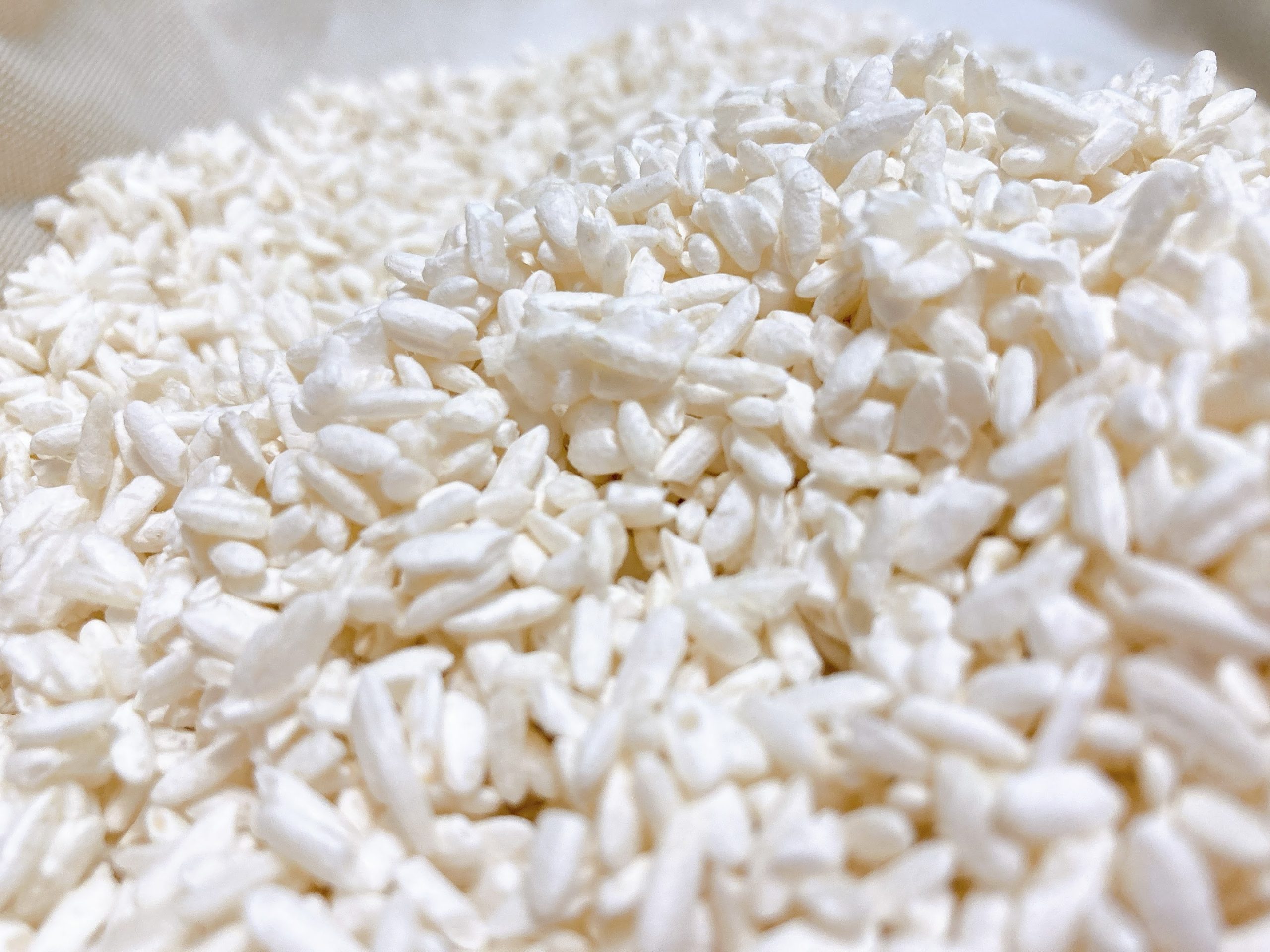Today, I would like to talk about the tools and ingredients you need.
If you have all the tools you need, you can start preparing righ away!
Please get them ready at your own pace.

The first step is to prepare the Soyashi-Mizu
Ingredients:
-Raw Rice
-Water
-Cooked rice (called Otai)
You will need the following items
-Containers/ glass jars
-Washcloth/teacloth
That’s all.
Simple, isn’t it?
If don’t eat rice everyday, you need to cook some rice to prepare Soyashi-mizu.
If you eat rice everyday, like Japanese people, there is no need to prepare it.
The amount of rice is only 450g, so it’s not a lot. (For Japanese people..lol)
About the Water:
If you can find good water, that would be ideal, but don’t think about it too hard. Just start with the best water you can find. I use Brita filtered water without thinking too hard.
I always use Volvic in my workshops.
You will need 750cc of water.
About the rice:
you can use leftover rice from dinner, if you eat rice like Japanese people.
It does not have to be freshly cooked rice, but preferably, use one that has lower chance to containing bacteria.
Just be aware that left over rice usually have a higher chance of contain bacterias than just freshly cooked rice.
About the container:
If you have a 2L container, it’s perfect. The one I use is the one in the photo above is 3L.
(By the way, the photo shows double the amount prepared in the class.)
To visually enjoy the fermentation process, I recommend using a vertical container.
I bought it at T&T (Chinese supermarket), and I think you can find it at PAT or Galleria (both Korean supermarkets).
Amazon might be more popular these days.
If you have a 2-liter glass container at home, please use it – you don’t have to buy something new!
If you have any questions, please feel free to ask.
I mentioned a plain cloth, but you can use gauze, a white cloth, or a white dish towel.
You can also cut and use the white cloth from IKEA which I usually recommend in my workshops.
What about Cheese Cloth?
People asked this question a lot, but I think it might tear because of the rubbing.
A 15cm square is enough.
Put the rice in the cloth squeeze the top and tie like a candy.
You can use the string to tie the top. If you don’t have a string, you can cut a cloth like and use it as a string instead.
The amount of rice is only a bit, – like 50g.
Other things you will need for the main preparation(hon shikomi)
I’ll give you a information about main preparation (hon-shikomi) now so you can prepare in advance.
Please look for it and prepare to be ready to use when the time comes.
The only material you will use for main preparation (hon-shikomi) is koji. You can purchase koji at your local store or from Koji Flower koji advisors who lives near you.
Some people can make specific koji for sake.
Here is a list of Advance members who sell koji.
You can also use regular koji, there is no problem at all.
What’s the difference between regular koji and koji for sake?
Koji for sake is made from a tanekoji (koji spores) which produce enzyme that are ideal for making sake.
Topic such as difference between the type of Tanekoji (koji spores), their charactors and the way to use them will be coverd at next month’s Rice Koji Making Class.
We will learn how to make the ideal koji for what we want to make.
We will use the same ingredients – only a rice and tanekoji – however, using different tanekoji with some techniques create really sweet koji, really sour koji, or koji specifically ideal for making Miso, Sake, Mirin, Soysauce, Amazake and so on.
Koji that you currently know may only be one kind.
However,
Koji has so many possibilities to make so many variety of seasonings through different techniques in making different charactor of koji.
That’s what making your own koji is all about.
It’s not just about learning how to make koji.
This is a great practice to use your five sense.
Practice how to feel yourself.

Making koji is a lot more fun than just buying it at the store.
Let’s get back to the main topic.
Here are the tools you need for main preparation:
-Colander.
-A steamer.
-If you would like to strain the finished sake, you may want to use a cloth.
-A container to hold the sake (such as an empty bottle of sake or a plastic bottle of carbonated drink)
-Jug
That’s about it. It’s that simple.
Next time, we’ll move on and talk about how to make soyashi-mizu!
See you tomorrow!
May 7, 2021
Shiori Kajiwara

